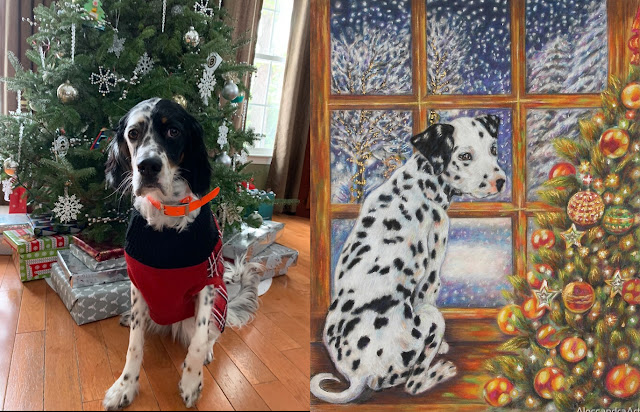Madeline Jacyszn created the photos and text for this blog post to fulfill her Creating Content for Community assignment in Digital Photography 2.
Coming Fall of 2024, AIC will be adding an exciting new minor to the roster: Creative Writing! Students choosing this minor will be exposed to different forms of creative writing and be coached through various modes of written expression. They will also engage in receiving and giving peer feedback.
Currently, AIC only offers Creative Writing I, but talking to the current students of this class can offer insight into the benefits of deciding to pick up this minor in the Fall.
Student Justin Howard cultivated a high opinion of Professor Steffen during a prior class and this factored significantly into his reasoning to take Creative Writing I. There were also personal elements involved, such as wanting to rehabilitate his relationship with creative writing and emerge from the class a more productive writer. He concluded that he enjoys the class overall; the open discussions about the literature are useful and he believes that he understands the writing process better.
Another student in the class who wished to remain anonymous stated that they found and took the class at their advisor's suggestion. When asked if they liked the class so far or not, they said that they did because they believed the teacher was helping the students open up and draw on personal experiences to channel into their writing. Overall, they want to be a better writer and think that the class has been useful in helping them towards that goal.
Professor Steffen said that he started teaching Creative Writing I when the previous professor resigned. Having to pick up teaching the class resulted in Professor Steffen being "bitten by the creative bug"; he found himself doing more creative writing and submitting more of his work to be published.
By teaching the class, Professor Steffen hopes the students will continue writing beyond coursework and develop better expression and communication skills in the process. He also wants to help students get their work published through various writing contests to help get their names out there as writers.
Regarding barriers students face with creative writing, Professor Steffen believes part of it is because students are discouraged from creative writing by other things. To reference Justin Howard, some students have a complicated relationship with creative writing or have trouble expressing themselves through it, which can make it a strenuous or unpleasant experience. Creating a more positive association and giving students direction with their creative writing is one way he tries to help students through this. Professor Steffen also believes that confidence is another factor that students can struggle with regarding creative writing. There are many potential facets to this, but hopefully guidance and an encouraging atmosphere can help them overcome this.
Maybe you are curious about creative writing too. Maybe you want to learn and engage more with the craft. Either way, the benefits of the Creative Writing minor cannot be understated. Please consider signing up in Fall of 2024!
From the Course Catalog:
The minor in Creative Writing will prepare students to express themselves creatively through a variety of literary forms and genres. Students will practice writing in a variety of literary genres, and sharpen their skills in writing short fiction, poetry, screenwriting, and playwriting. Students will learn how to market their work for a variety of different audiences in various print and digital media and will be introduced to venues for publishing and strategies for self-publication. This minor also gives students the opportunity to edit the student literary magazine,
The Criterion. Students will produce a professional and polished portfolio of written creative work.
Upon completion of the minor in Creative Writing, students will be able to:
· Express themselves creatively through a variety of literary forms and genres
· Present a marketable portfolio of quality artistic work
· Market their creative writing for a variety of audiences in various print and digital media
· Use creative expression as a tool for solving problems in the real world
· Communicate effectively through writing
Required Courses:
Creative Writing I (3 credits)
The Short Narrative / Creative Writing II (3 credits)
Poetry / Creative Writing III (3 credits)
Creative Non-Fiction/ Creative Writing IV (3 credits)
Writing for Stage and Screen (3 Credits)
Creative Writing Capstone (3 credits)


































